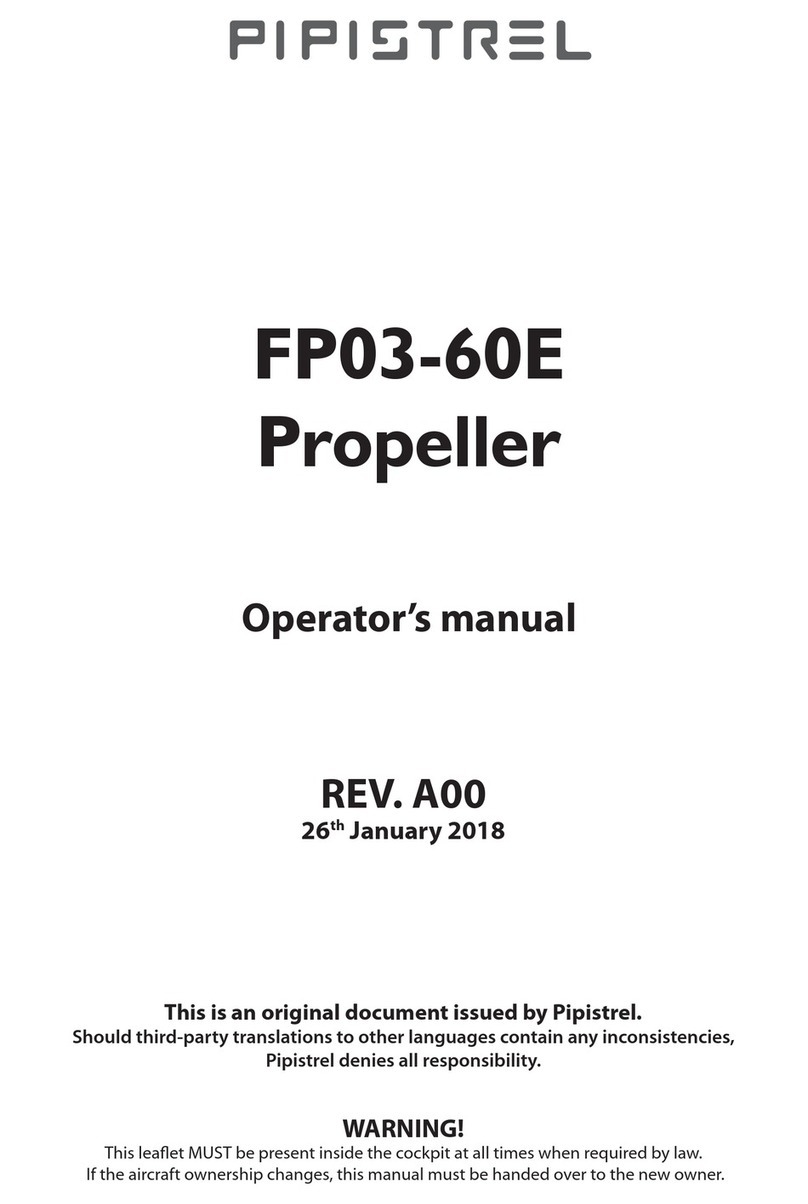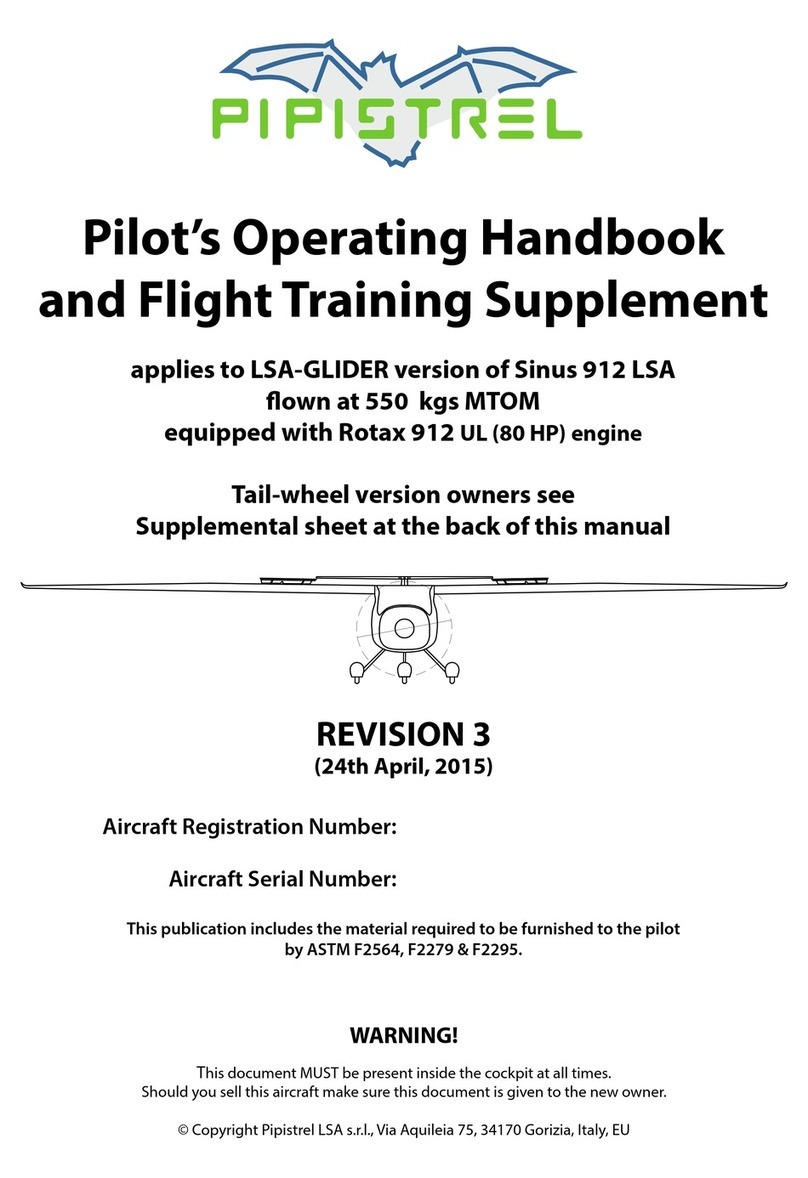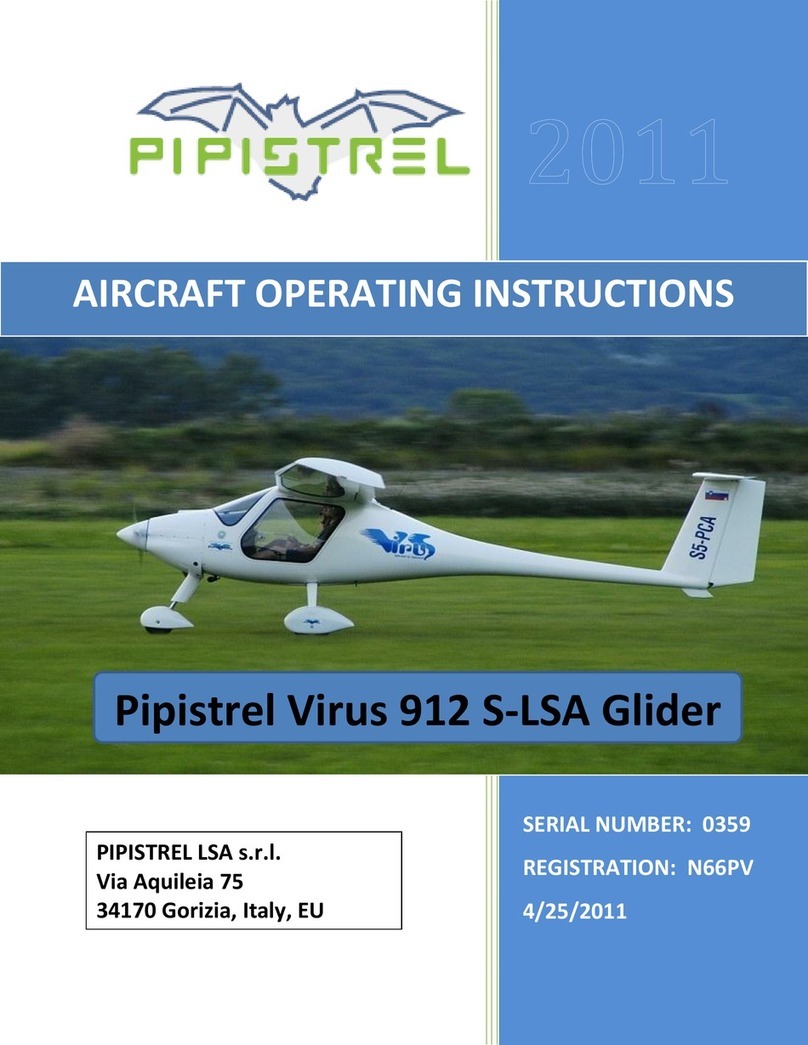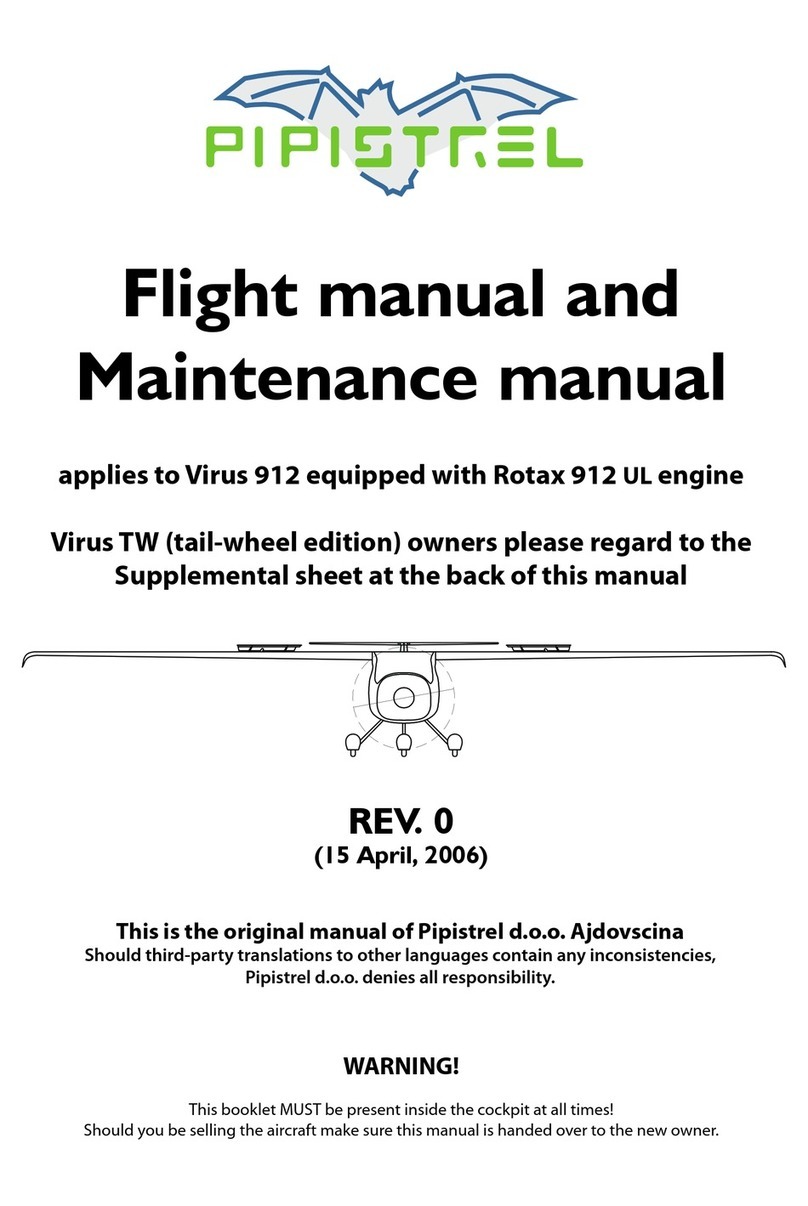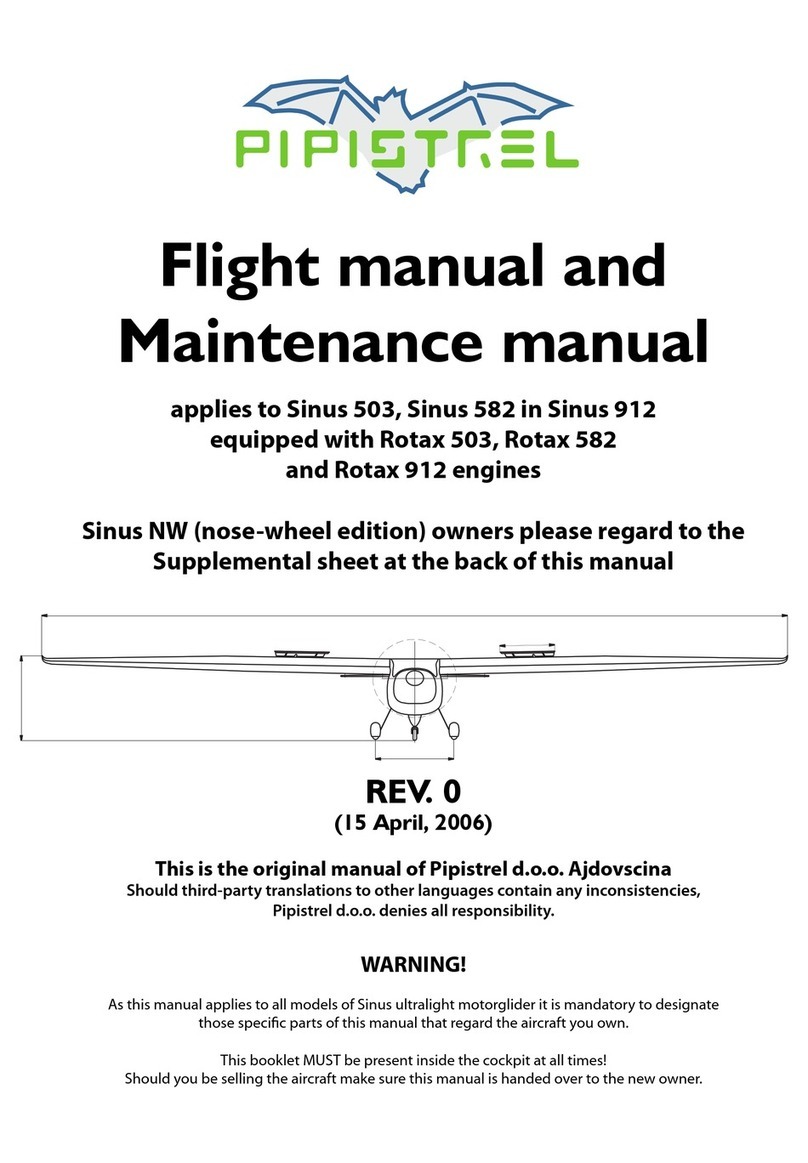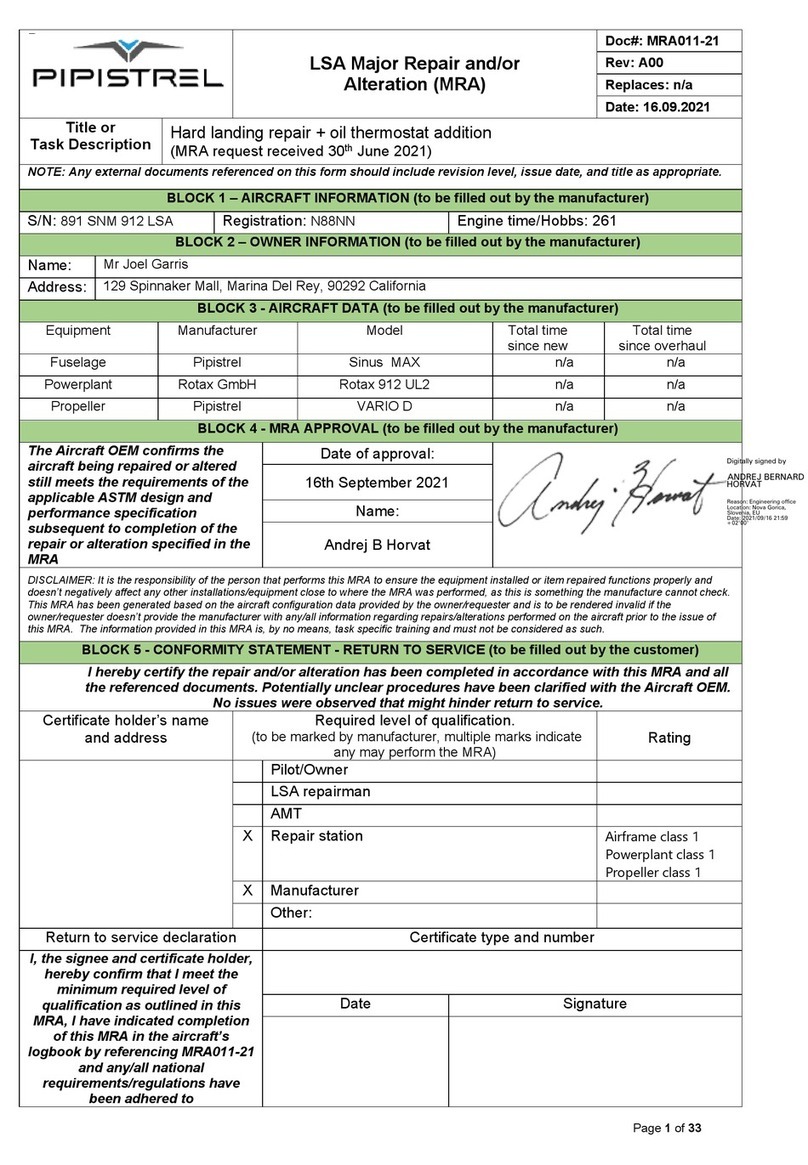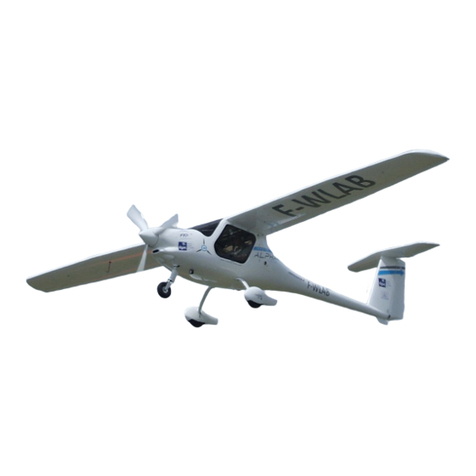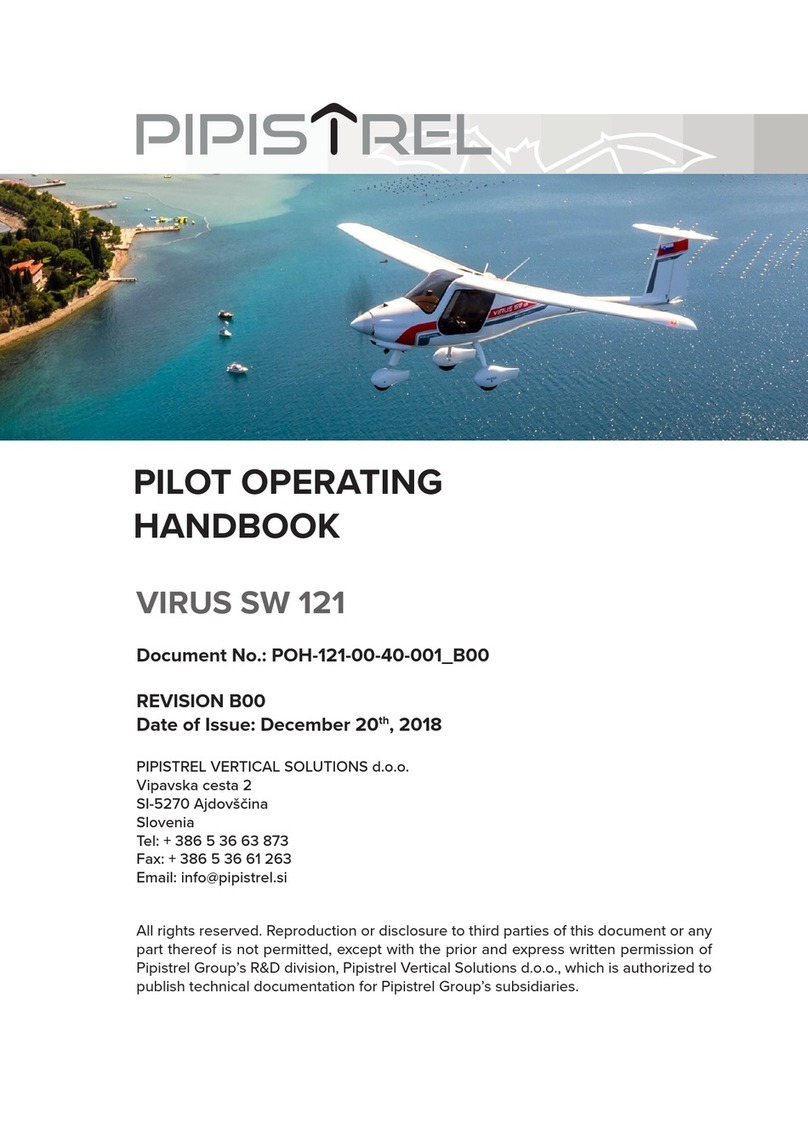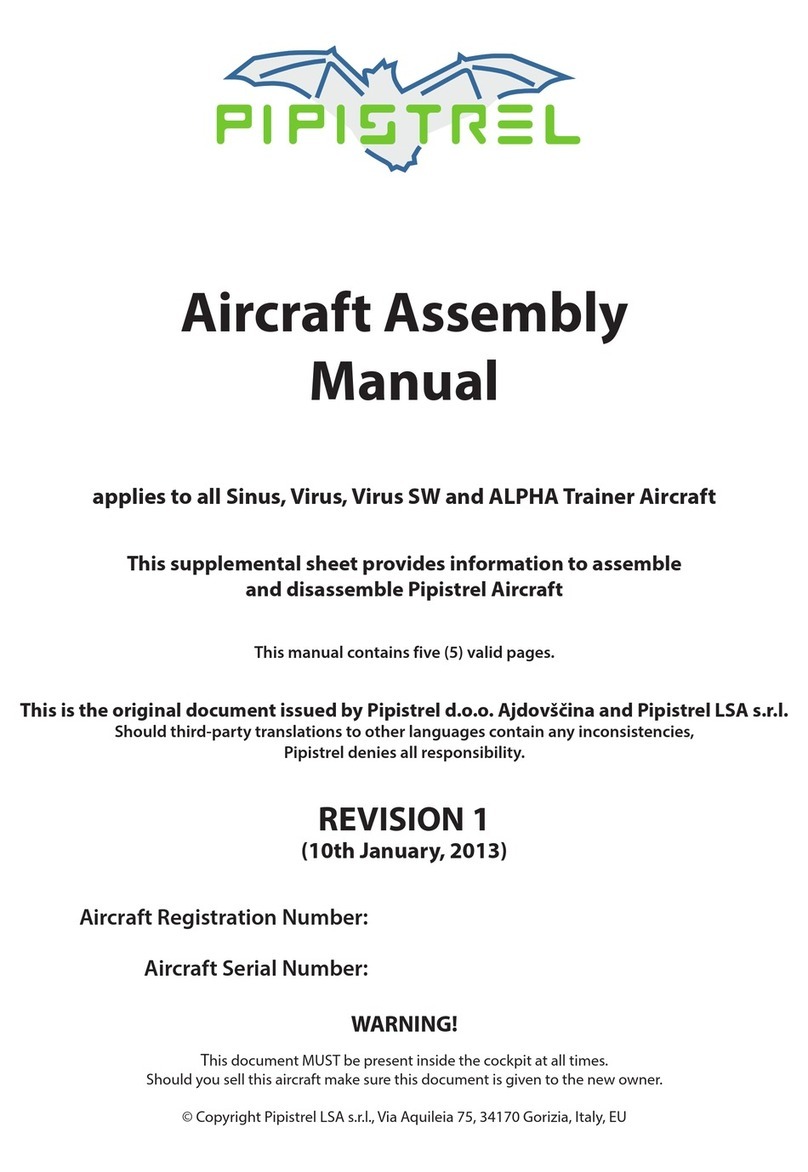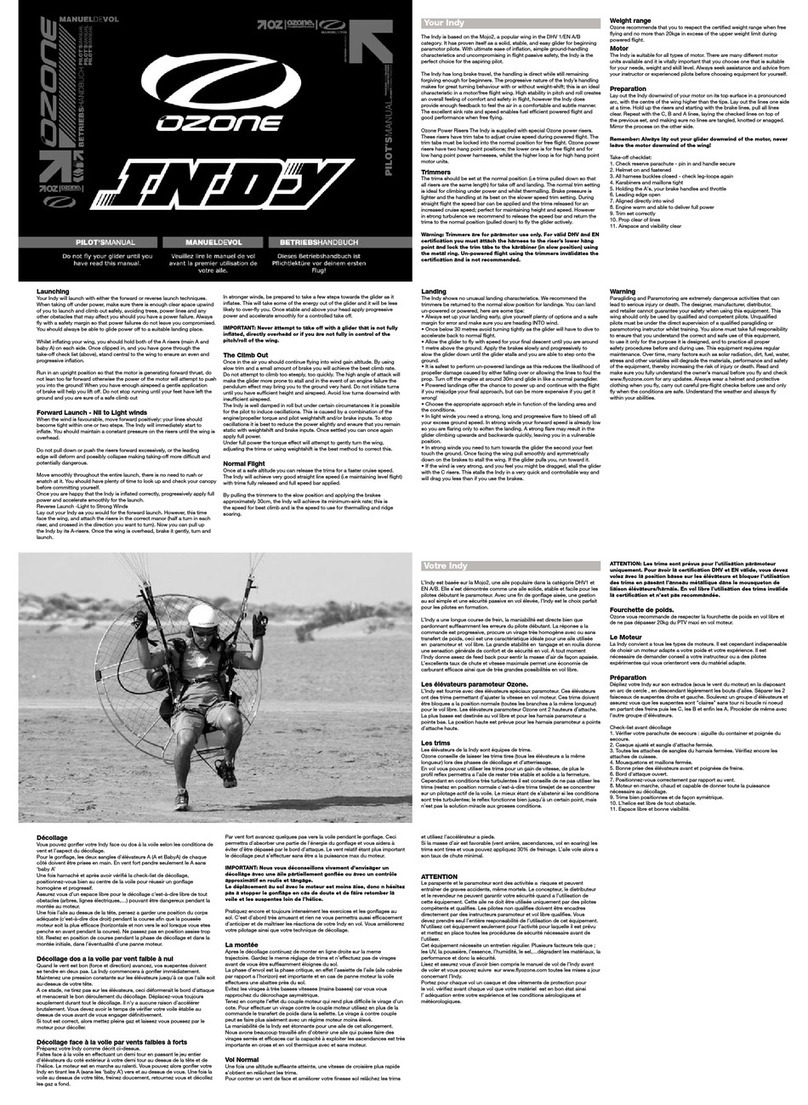
iv
PAGE
VELIS Electro
Pilot's Operating Handbook
POH-128-00-40-001
PAGE REV. 0
Special statements in the Pilot's Operating Handbook/Airplane Flight Man-
ual concerning the safety or operation of the airplane are highlighted by
being prefixed by one of the following terms:
WARNING: Means that the non-observance of the corresponding proce-
dures lead to an immediate or significant degradation in flight safety.
CAUTION: Means that the non-observance of the corresponding proce-
dures leads to a minor or to a long term degradation of the flight safety.
NOTE: Draws the attention to any special item not directly related to safety
but which is important or unusual.
Revision tracking, filing and identifying
Pages to be removed or replaced in this pilot's operating handbook (POH)
are determined by the log of effective pages located in this section. This log
contains the page number and revision number for each page within the
POH. As revisions to the POH occur, the revision number on the affected
pages is updated and the page number in the log is highlighted with bold
font type. When two pages display the same page number, the page with the
latest revision shall be used in the POH.
The revision number on the log of effective pages shall also coincide with
the revision number of the page in question. As an alternative to removing
and/or replacing individual pages, the owner can also print out a whole new
manual in its current form.
Revised material is marked with a vertical bar that will extend the full length
of deleted, new or revised text added to new or previously existing pages.
This marker will be located adjacent to the applicable text in the marking on
the outer side of the page. The same system applies when the header, figure
or any other element inside this POH is revised. A list of revisions is located
at the beginning of the log of effective pages. Pipistrel is not responsible for
technical changes/updates to OEM manuals supplied with the aircraft (e.g.
radio, transponder, GPS, etc.).
USING THIS HANDBOOK



